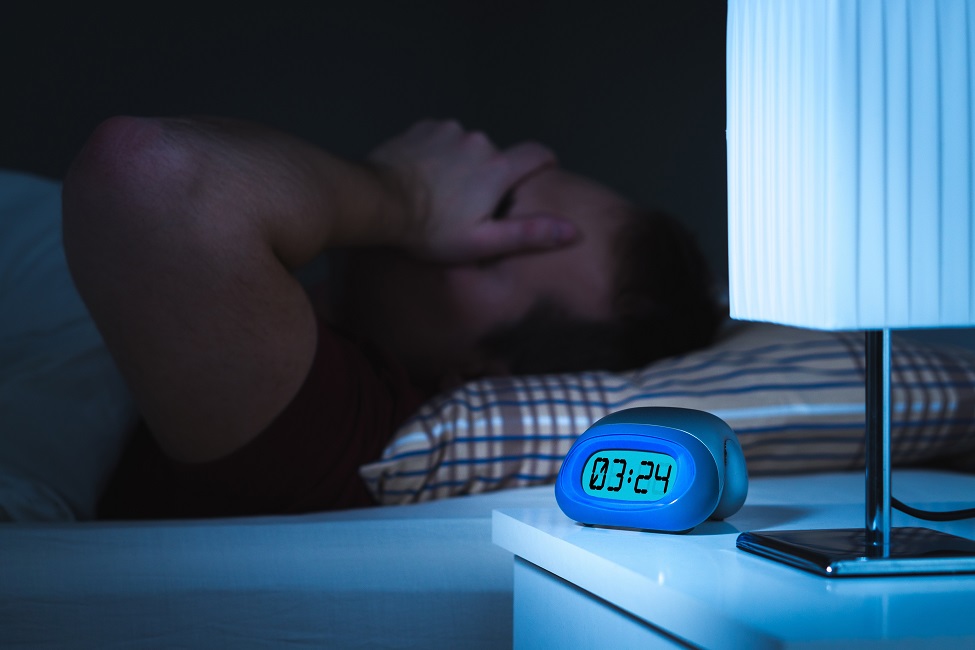Interplay Between Sleep, Pain and Spinal Cord Stimulation

Researchers have successfully measured treatment effects of spinal cord stimulation on patients’ lives.
Often debilitating, chronic pain is one of the most common reasons individuals seek medical help. About 65 million adults in the United States are affected by chronic pain. Between 67 to 88 percent of them also suffer from sleep disturbances, including longer and more frequent nocturnal awakenings and poorer sleep quality. Moreover, sleep disorders also may exacerbate pain by contributing to the development of obesity, diabetes mellitus, and depression.
Because chronic pain and sleep are thought to be correlated, treatment of one could be beneficial to the other. One such treatment is spinal cord stimulation, which shows mounting evidence that it improves aspects of sleep and has demonstrated efficacy in treating a multitude of chronic pain conditions. This treatment involves an implantable spinal cord stimulator that sends low levels of electricity directly into the spinal cord to relieve pain. However, its impact on patients’ lives has yet to be determined.
Researchers from Florida Atlantic University’s Schmidt College of Medicine, in collaboration with Albany Medical Center, conducted a study to better understand the effect of spinal cord stimulation on chronic pain and sleep.
For the study, participants completed a battery of certified outcome measures regarding sleep, pain, functional status, and overall quality of life at various time periods throughout the study. These surveys were given pre-operatively and either six months or one year post-operatively. Participants also were asked about their satisfaction with the spinal cord stimulation procedure and if they would have the surgery again.
Researchers examined the relationship between pain outcome measures using the insomnia severity index, a clinical screening tool that assesses the severity of both nighttime and daytime components of insomnia. With this tool, they established the minimally clinical important difference – the smallest noticeable change that a patient perceives as clinically significant, and which could indicate a change in their management. Minimally clinical important difference is particularly useful in evaluating newer treatments, as these have a smaller cohort with which to compare for statistical significance.
The study, published in the journal Stereotactic and Functional Neurosurgery , successfully established minimally clinical important difference ranges for the insomnia severity index outcome measure to help gauge improvement in insomnia after spinal cord stimulation.
Results showed insomnia severity index improvement of 30 percent or more in 39.1 percent of the participants and an Epworth sleepiness scale of 30 percent or more in 28.1 percent of the participants. Minimally clinical important difference values of 2.4 to 2.6 correlated with improvement in disability and depression in the participants. The study revealed associations with sleep and both pain and depression, but no correlation between sleep and spinal cord stimulation success.
“The physiologic mechanisms of both pain and sleep are complex, and the relationship between the two is poorly understood,” said Julie Pilitsis, M.D., Ph.D., senior author and dean and vice president for medical affairs, FAU Schmidt College of Medicine. “By recognizing the intersection of sleep disorders and chronic pain, treatment plans can be more focused and can thus lead to drastic improvements in overall health, beyond the improvement in sleep or pain alone.”
Spinal cord stimulation success was measured by the change between the pre-operative scores and the scores between six to 12 months post-operatively. The insomnia severity index asks seven questions to assess an individual’s level of insomnia, with higher scores indicating increased nocturnal sleep disturbance. The Epworth sleepiness scale quantifies day-time sleepiness based on a patient’s likelihood to doze off during eight daily activities, with higher scores indicating increased daytime sleepiness. To determine which patients had improved sleep, researchers looked at improvement in insomnia severity index or Epworth sleepiness scale of 30 percent or more.
“Our study includes pertinent sleep conditions in our analysis, as the interplay between sleep and chronic pain is important to consider in patients undergoing spinal cord stimulation,” said Pilitsis, who also is a member of the FAU Stiles-Nicholson Brain Institute. “As more studies are conducted on minimally clinical important difference thresholds, assessing the clinical response to spinal cord stimulation will improve. As such, we can gain a better understanding of the type of patient most likely to benefit from this treatment.”
Study co-authors are Phillip M. Johansen, a fourth-year FAU medical student; Frank A. Trujillo, a third-year FAU medical student; Vivian Hagerty, M.D., an FAU general surgery resident; FAU Schmidt College of Medicine; and neurosurgeons Tessa Harland, M.D.; and Gregory Davis, M.D., both with Albany Medical Center.
-FAU-
Latest Research
- FAU's Queen Conch Lab Receives Prestigious International AwardFAU Harbor Branch researchers have received the 2025 Responsible Seafood Innovation Award in Aquaculture from the Global Seafood Alliance for its Queen Conch Lab's pioneering work in sustainable aquaculture.
- After Cancer: Study Explores Caring-Healing Modalities for SurvivorsResearch from FAU's Christine E. Lynn College of Nursing highlights how caring-healing methods like mindfulness can ease distress and build resilience in cancer survivors.
- FAU Researchers 'Zoom' in for an Ultra-Magnified Peek at Shark SkinWhat gives shark skin its toughness and sleek glide? Tiny, tooth-like denticles. Researchers used electron microscopy to reveal how these structures shift with age, sex, and function in bonnethead sharks.
- FAU Lands $3M Federal Grant to Prevent Substance Use in At-risk Youth"Rising Strong" will support more than 3,000 South Florida youth with trauma-informed, evidence-based prevention, empowering vulnerable populations to build resilience and choose substance-free futures.
- FAU Research: Logistics Expansion Slows as Transportation Prices DropThe Logistics Managers' Index had the lowest overall reading since March as the supply chain reacts to economic uncertainty, according to researchers from Florida Atlantic University and four other schools.
- World's First Bench-to-Bedside MRI, Focused Ultrasound System UnveiledThe newly expanded FAU NeuroInnovate Center is the first in the world to integrate advanced MRI and focused ultrasound technologies into a single, unified platform for both preclinical and clinical research.






